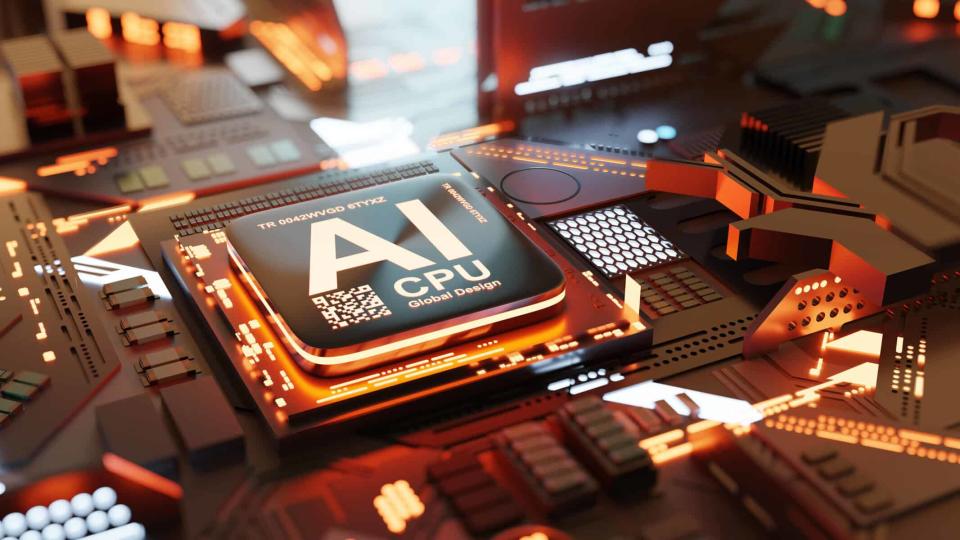NVIDIA’s Historic Stock Split: Too Late to Invest?

Written by Andrew Button at The Motley Fool Canada
NVIDIA (NASDAQ:NVDA) recently became the biggest company in the world by market cap, eclipsing Microsoft and Apple to take the top spot. Although it lost the title after Apple announced its new ‘Apple Intelligence’ suite of products, the fact that NVDA was briefly #1 shows just how far the company has come thanks to the rise of generative artificial intelligence (AI).
NVIDIA, the supplier of chips to companies like Microsoft, Meta and Alphabet, is making metric tonnes of money off of those companies’ AI investments. Ever since ChatGPT launched in 2022 and became the fastest-growing app of all time, big tech companies have been throwing money at NVIDIA trying to achieve AI successes of their own. The company’s A100, H100 and B100 graphics cards are needed to handle high-intensity workloads in AI servers. Big tech has been buying these chips by the truckload, with the result being an explosion in NVIDIA’s growth and profit: in the most recent 12-month period, the company’s revenue increased 200% and its earnings increased 800%!
It’s been quite a thing to witness. However, much of this growth is now “priced in” to NVIDIA stock. At today’s prices, NVDA trades at 73 times earnings and 50 times the best estimate of next year’s earnings. It’s a pricey stock. The question is, is NVDA too pricey to invest in, or does its growth justify the multiples?
A steep valuation
There’s no question that NVIDIA’s stock is pricey. Going by Friday’s closing price, it trades at:
73 times earnings.
41 times sales.
67 times book value.
80 times cash flow.
These multiples are certainly very high. However, NVIDIA’s high growth is expected to continue: hence, its forward P/E ratio being much lower than its trailing P/E ratio.
Continued high growth
Despite (or perhaps because of) its expensive valuation, NVIDIA’s high growth is expected to continue. The company’s forward P/E of 50 implies 46% year-on-year growth in the year ahead. That’s not as rapid as the last 12 months’ growth, but it’s still very high. If this growth continues, then NVDA may be worth the investment. However, it must be said that even a 50 P/E ratio is extraordinarily high.
A cheaper Canadian AI stock to consider
If you’re looking to get a piece of the generative AI action in your portfolio, but feel NVIDIA is too expensive, one option you could consider is investing in alternative AI stocks. Companies like Taiwan Semiconductor Manufacturing gain from much the same trends that NVIDIA does, while being far cheaper. There are Canadian AI companies worth thinking about as well.
One of those is Open Text Corp (TSX:OTEX). It’s a Canadian software company that develops content management systems and text analysis software. It uses generative AI extensively in its business. For example, the company’s “Content Cloud” service uses AI to glean insights and keywords from documents. It can also use large language models to generate text. These features are extremely valuable to businesses and have contributed to an explosion in growth at OTEX. In the last 12 months, the company’s revenue grew 51%, far faster than the five-year average.
Despite all this growth, OTEX stock is fairly cheap, trading at 7 times earnings, 42 times adjusted earnings, 1.3 times sales, and 1.9 times book value. Compared to NVIDIA, this stock is a veritable bargain. Yet it has no shortage of growth or profitability. On the whole, it’s worth looking at.
The post NVIDIA’s Historic Stock Split: Too Late to Invest? appeared first on The Motley Fool Canada.
Should you invest $1,000 in Nvidia right now?
Before you buy stock in Nvidia, consider this:
The Motley Fool Stock Advisor Canada analyst team just identified what they believe are the 10 best stocks for investors to buy now… and Nvidia wasn’t one of them. The 10 stocks that made the cut could potentially produce monster returns in the coming years.
Consider MercadoLibre, which we first recommended on January 8, 2014 ... if you invested $1,000 in the “eBay of Latin America” at the time of our recommendation, you’d have $17,363.76!*
Stock Advisor Canada provides investors with an easy-to-follow blueprint for success, including guidance on building a portfolio, regular updates from analysts, and two new stock picks each month – one from Canada and one from the U.S. The Stock Advisor Canada service has outperformed the return of S&P/TSX Composite Index by 26 percentage points since 2013*.
See the 10 stocks * Returns as of 6/3/24
More reading
Can You Guess the 10 Most Popular Canadian Stocks? (If You Own Them, You Might Be Losing Out.)
How to Build a Bulletproof Monthly Passive-Income Portfolio in 2024 With Just $25,000
Suzanne Frey, an executive at Alphabet, is a member of The Motley Fool’s board of directors. Randi Zuckerberg, a former director of market development and spokeswoman for Facebook and sister to Meta Platforms CEO Mark Zuckerberg, is a member of The Motley Fool's board of directors. Fool contributor Andrew Button has positions in Alphabet and Taiwan Semiconductor Manufacturing. The Motley Fool recommends Alphabet, Apple, Meta Platforms, Microsoft, Nvidia, and Taiwan Semiconductor Manufacturing. The Motley Fool has a disclosure policy.
2024

 Yahoo Finance
Yahoo Finance 